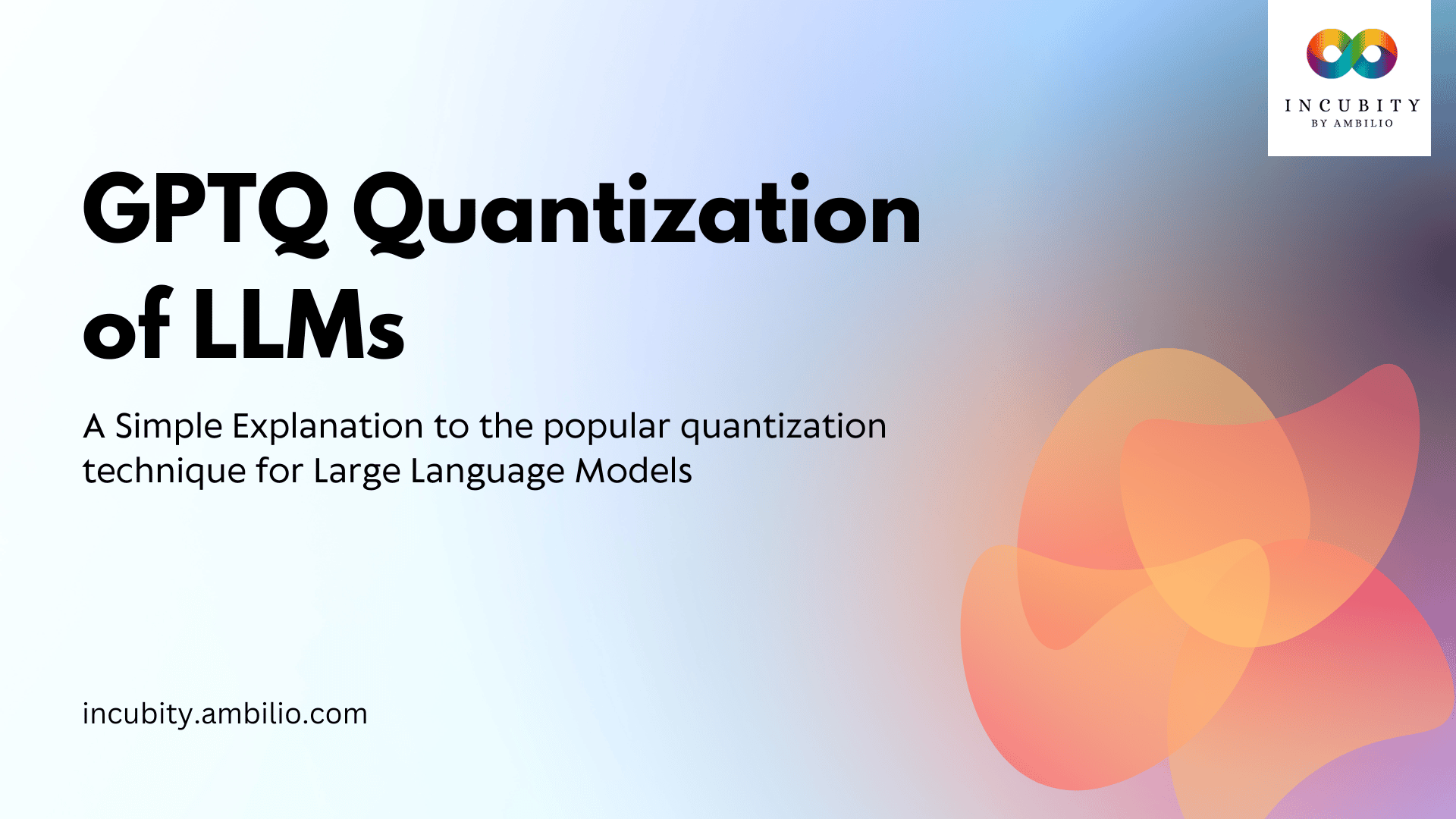Generative Pre-Trained Transformer Quantization (GPTQ) tackles a critical challenge in AI: deploying large language models (LLMs) like GPT-4 on resource-constrained devices. These models excel in human-like text generation but are hindered by their size, limiting their use on smartphones or edge computing systems. GPTQ addresses this by compressing LLMs, making them feasible for deployment on devices with limited resources. This article simplifies how GPTQ Quantization of LLMs resolves the issue of deploying powerful models efficiently, ensuring they remain accessible while maintaining their text generation capabilities.
Why GPTQ Quantization of LLMs?
Large Language Models (LLMs) have achieved remarkable feats in natural language processing, from answering questions to translating languages and summarizing text. However, their success comes at a cost. Models like GPT can have hundreds of millions or even billions of parameters (variables that the model learns), which require significant computational power and memory to operate efficiently. This makes them inaccessible for deployment on devices where resources are limited, such as mobile phones or IoT devices.
GPTQ addresses this challenge by compressing these large models while maintaining their essential functionality. By reducing the size of LLMs through quantization, GPTQ aims to make these powerful models accessible and usable on a broader range of devices without sacrificing their performance.
How GPTQ Quantization of LLMs Works?
GPTQ employs a method called layer-wise quantization to compress LLMs. Here’s how it works in simple terms:
Quantization Process
Each layer of the LLM is analyzed and its parameters (numbers that represent the strength of connections between neurons) are converted from their original precise values (which can have many decimal places) into simplified integers (whole numbers). This conversion reduces the amount of memory needed to store these values and the amount of computation required to process them.
Optimal Brain Quantization (OBQ)
GPTQ uses a sophisticated technique inspired by neural network pruning, where unnecessary connections in the model are removed without affecting its overall performance. OBQ ensures that after quantization, the model’s ability to generate accurate and meaningful text remains intact. It achieves this by carefully adjusting the remaining weights (connections) to minimize any loss in performance caused by the simplification process.
Benefits of GPTQ
The primary advantage of GPTQ lies in its ability to make LLMs more accessible and practical for real-world applications. By reducing the size of these models without compromising their accuracy, GPTQ offers several benefits:
- Resource Efficiency: It allows LLMs to operate on devices with limited memory and processing power, such as smartphones, tablets, or embedded systems.
- Faster Inference: Quantized models often require less computation to generate outputs, leading to faster response times in applications that require real-time interaction, such as chatbots or voice assistants.
- Cost-Effectiveness: By reducing the computational resources needed to run these models, GPTQ can lower infrastructure costs for organizations deploying AI solutions.
Evaluating GPTQ
GPTQ’s effectiveness is measured through various metrics that assess how well the quantized models perform compared to their original counterparts. These metrics include:
- Perplexity: A measure of how well the model predicts the next word in a sequence of text.
- BLEURT: Evaluates the quality of text generation by comparing generated text against human-written references.
- ChrF, Frugalscore, and METEOR: Metrics that gauge the overall quality and accuracy of translated text or summaries.
Studies and evaluations of GPTQ have shown promising results, demonstrating that it can significantly reduce the memory footprint and computational requirements of LLMs while maintaining high levels of accuracy across these metrics.
Implementation and Applications
GPTQ has been implemented using various frameworks and tools tailored for different LLM architectures. One notable framework is AutoGPTQ, which automates the quantization process and ensures consistency across different models. Practical applications of GPTQ span across diverse domains:
- Customer Support: Enhanced chatbots equipped with GPTQ can deliver accurate and timely responses to customer inquiries, improving user interaction and satisfaction.
- Healthcare: GPTQ-powered medical assistants can analyze patient data more efficiently, aiding healthcare professionals in making diagnostic recommendations and improving patient care outcomes.
- Education: In the field of education, GPTQ enables tutoring systems to generate personalized learning materials tailored to individual student needs, enhancing the effectiveness of educational interventions and supporting personalized learning journeys.
- Finance: Applications in finance include sentiment analysis and risk assessment, where GPTQ-enhanced models can analyze vast amounts of financial data to make informed decisions and predictions.
- Legal Services: In legal domains, GPTQ can assist with document analysis, contract review, and legal research, improving efficiency and accuracy in legal processes.
Final Words
Generative Pre-Trained Transformer Quantization (GPTQ) represents a significant advancement in the deployment of Large Language Models, making them more accessible and practical for a wide range of applications. By reducing the size and computational demands of these models through advanced GPTQ Quantization of LLMs techniques, GPTQ enables their deployment on devices with limited resources without compromising their performance. As AI continues to evolve, techniques like GPTQ pave the way for more efficient and scalable solutions, driving innovation across industries and empowering new possibilities in artificial intelligence and natural language processing.



